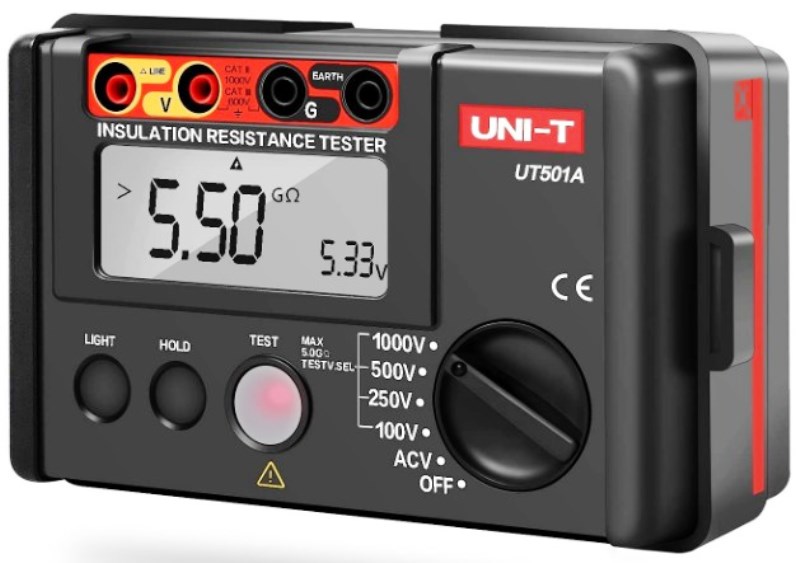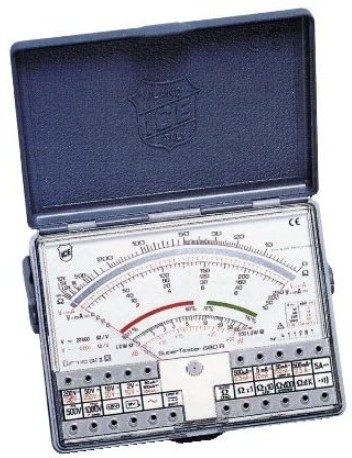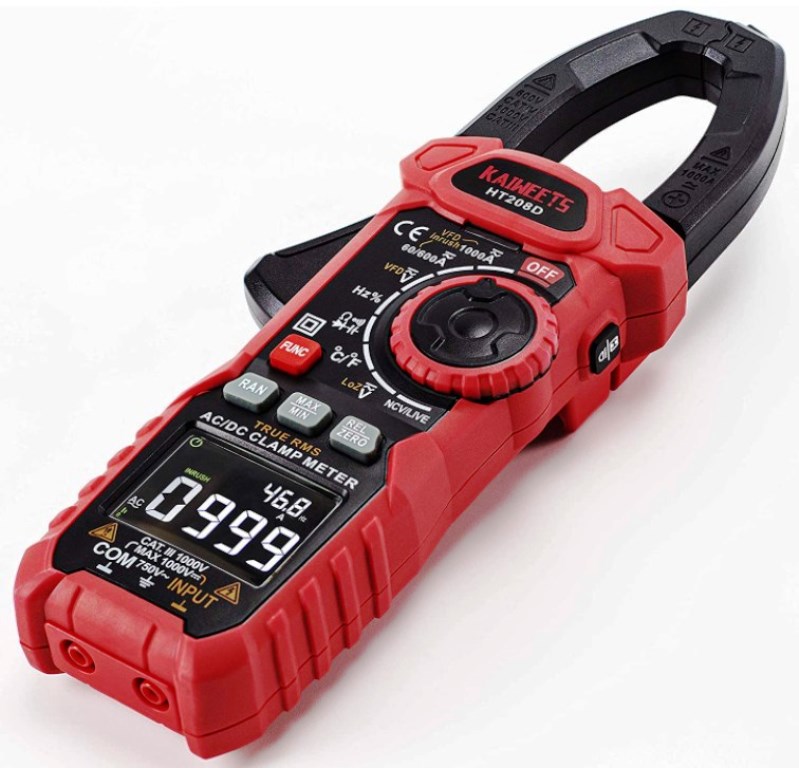Low insulation - Insulation resistance
How to check the low insulation of a refrigerator compressor (and motors in general) with an ICE 680R analog multimeter (in the absence of Megger). Bear in mind that not all analog multimeters are good (ICE 680R: V= 20.000 ohm/V).
This guide is a vital information document for anyone involved in engineering, electronics, installation and maintenance of electrical and electronic systems. This guide provides a complete and in-depth overview of insulation resistance, focusing in particular on situations where this resistance is lower than the desired value, referred to as “Low Insulation”.
Electrical insulation is a critical aspect in all electrical and electronic systems, protecting against possible short circuits, dangerous flashovers and other faults. Insulation resistance measures the effectiveness of electrical insulation in a system and indicates the amount of current that can flow through it. Its importance becomes evident when the insulation resistance is below a certain value, a situation which can lead to safety, performance and reliability problems.
Throughout this guide, we will look in detail at the key concepts related to insulation resistance, including the factors that can influence it and the implications of low insulation resistance. You will learn how to measure and evaluate insulation resistance and how to effectively deal with situations where poor insulation is encountered.
The safety and reliability of electrical and electronic systems are priorities in every sector, from industry to construction and equipment manufacturing. This guide is designed to be a clear and detailed information resource, providing engineers, technicians, installers and anyone working with electrical systems with the knowledge needed to identify, prevent and resolve low insulation resistance problems.
Low insulation - insulation resistance
How many times has it happened to find the differential disconnected for no apparent reason, or that opens when you turn on a certain electrical appliance?
By following the instructions in this paper, you will see that you can find the reason.
- How to check the low insulation or insulation resistance of a component with moving parts with a metal casing (electric motors, refrigeration compressors, etc.) with an analog multimeter.
Type of inconvenience: triggers the differential for no apparent reason and at any time of the day.
- How to find the ground fault present in electrical appliances that triggers your RCD (chandeliers, ovens, washing machines, small appliances with metal casing, etc.) with an analog multimeter.
Type of problem: it triggers the differential immediately when the appliance is switched on (in some cases, it can cause the same problems as the previous type - for example humidity in the cable ducts).
To consider that not all analog multimeters are good, you need one with a very high sensitivity such as: ICE 680R (V = 20.000 ohm / Vcc - 4.000 Vac) or equivalent.
Instead of the multimeter it would be possible to use a "Megger" (insulation resistance meter) but if while a multimeter can be used on many occasions, the Megger cannot. So, in the case of purchase, the multimeter offers a higher possibility of use.
As previously indicated, our test is carried out using an ICE 680R model analog tester:
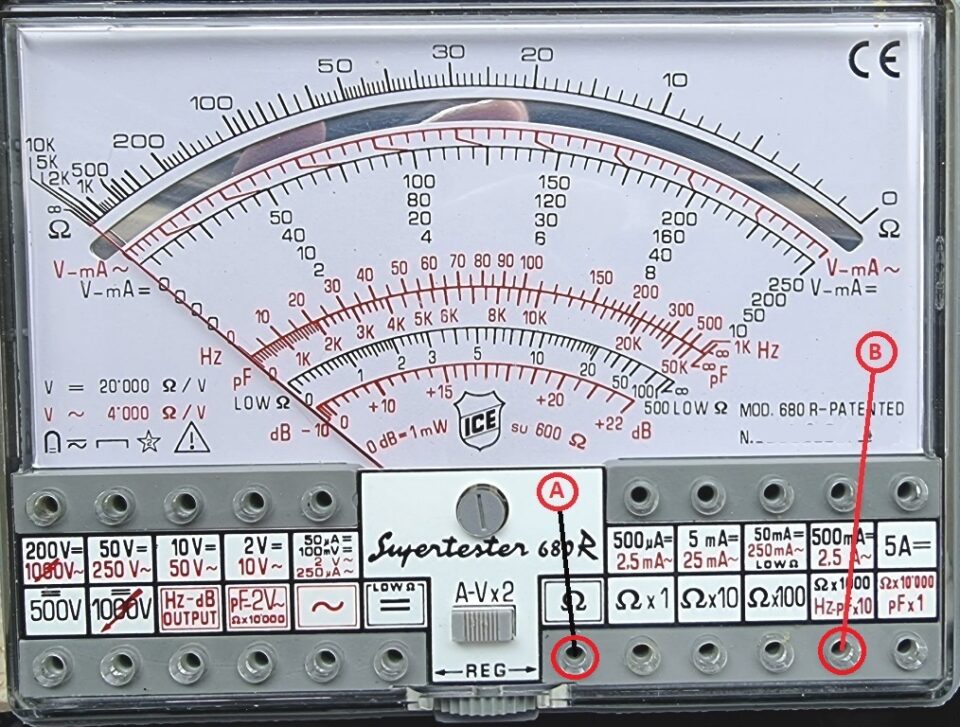
How to proceed in the case of a component with moving parts equipped with a metal casing
Insert the small test leads into the hand tester (multimeter):
- the black tip into hole A
- the red test lead into hole B
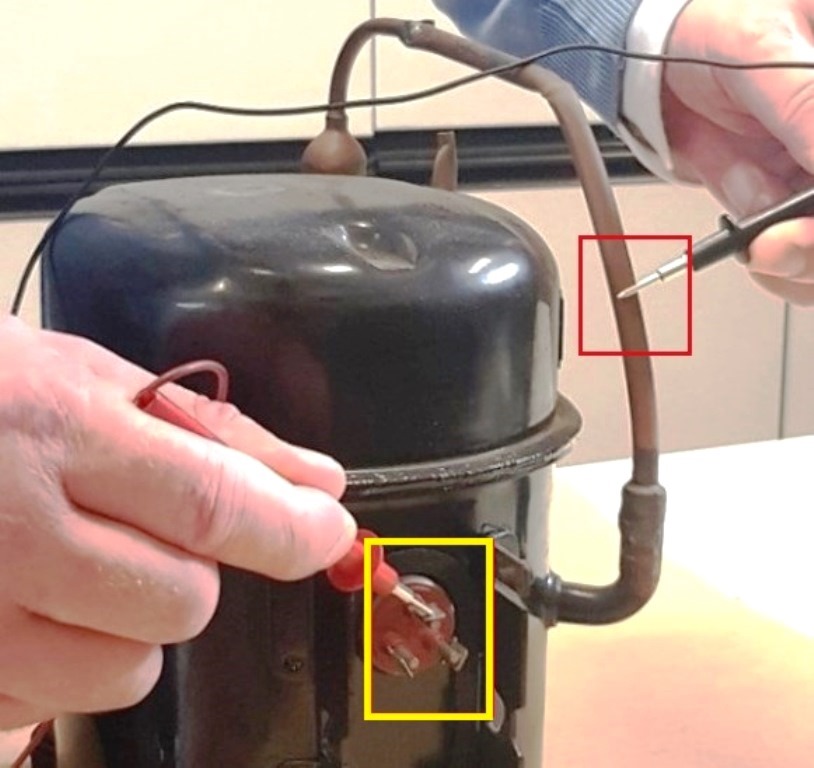
Place the large test leads between a clamp (fusite) of the compressor and a certain ground (copper tube is fine too).
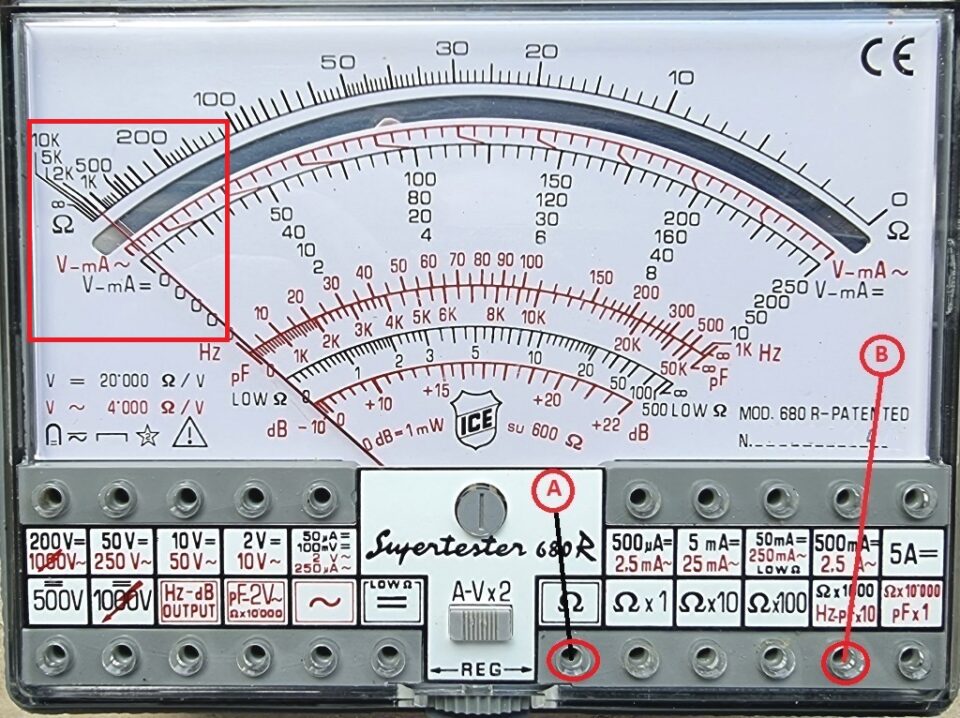
If the index moves (even slightly) to the right, the compressor (or the component if applicable) is in low insulation. In the case of hermetic compressors it is convenient to replace them, in all other cases the possibility of rewinding the motor must be considered.
How to proceed in the case of earth leakage present in commonly used electrical appliances
Let's start by finding the device that causes the differential to trip.
We proceed by exclusion:
- we disconnect all the appliances connected to the mains, they must be physically disconnected by removing the plug from the socket;
- we do the tests without load and see if the RCD intervenes - if it continues to intervene, the fault may be due to the malfunction of the RCD itself or to the internal distribution network. Sometimes even the humidity that can accumulate inside the cable duct can cause the differential to trip (without any load and at any time);
We can apply the indications used previously.

Insert the small test leads into the hand tester (multimeter):
- the black tip into hole A
- the red test lead into hole B
put the long leads of the multimeter in contact with the leads of the plug as shown in photo 5, first A and then B (indifferent red or black lead).
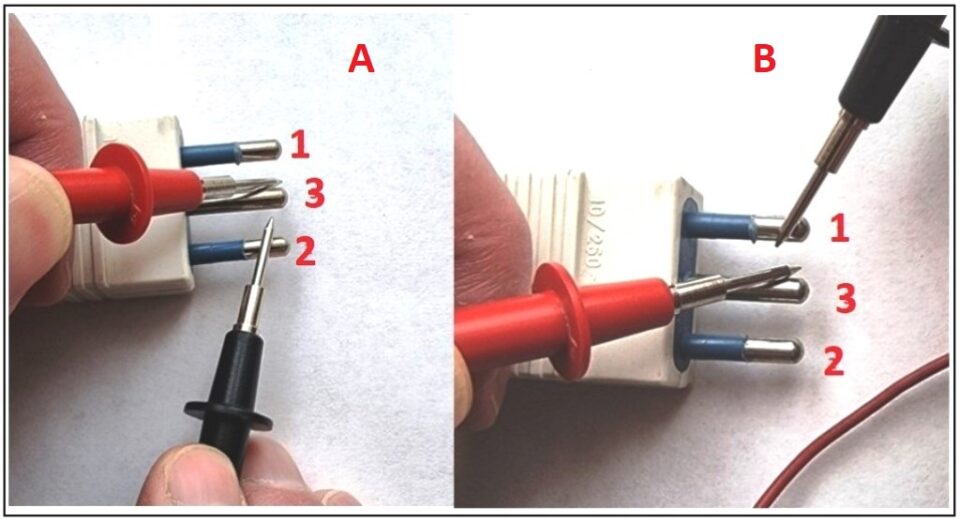
In each of the two positions used (A and B) the hand of the multimeter should never look like this:
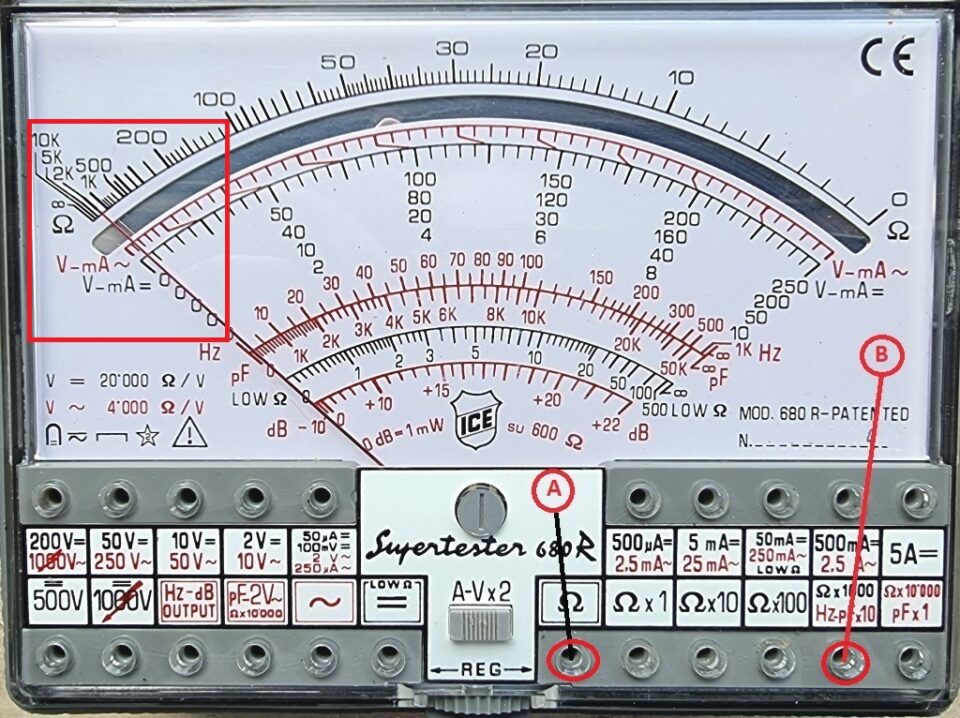
If the multimeter indicates the value of photo 6, the device is in low insulation (not usable also from the point of view of safety).
In these cases it is forbidden to disconnect the earth: the appliance would remain in operation but this would prevent the differential from intervening and could lead to serious consequences for any contact between person and appliance.
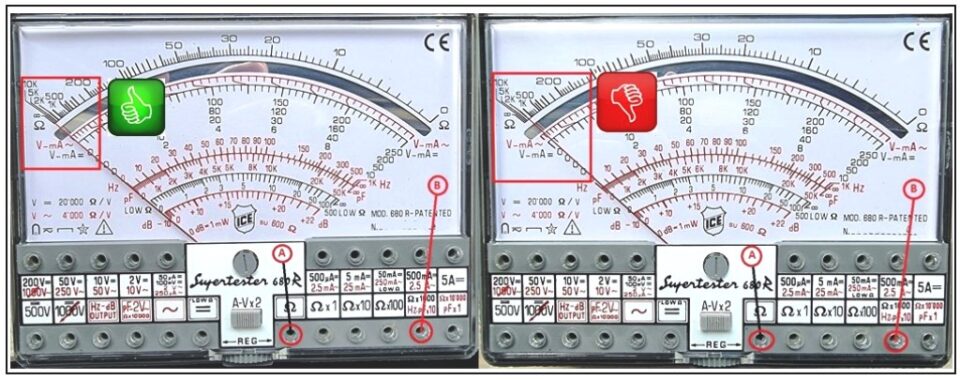
At this point, it is necessary to find the component that disperses towards the ground.
We proceed with the same system as the previous one: each component examined must not be connected to anything; all electrical connections must be disconnected, terminals, fastom, etc. (only the earth can remain). In practice, the test must be carried out on the component as if it were placed in another environment. Carry out the test by inserting the ferrules between the earth terminal and each single line terminal.
When the component that in the multimeter of photo 7 offers the right view (red thumbs down) is found, we have achieved our goal: we have isolated the dispersion component.
Now just replace it and that's it.
Easy?
Other free programs of the same kind offered by itieffe ▼
- Electricity - Electronics
- Calculation of color coded electric resistances
- Electric - electronic tables
- Electrical drawing diagrams

